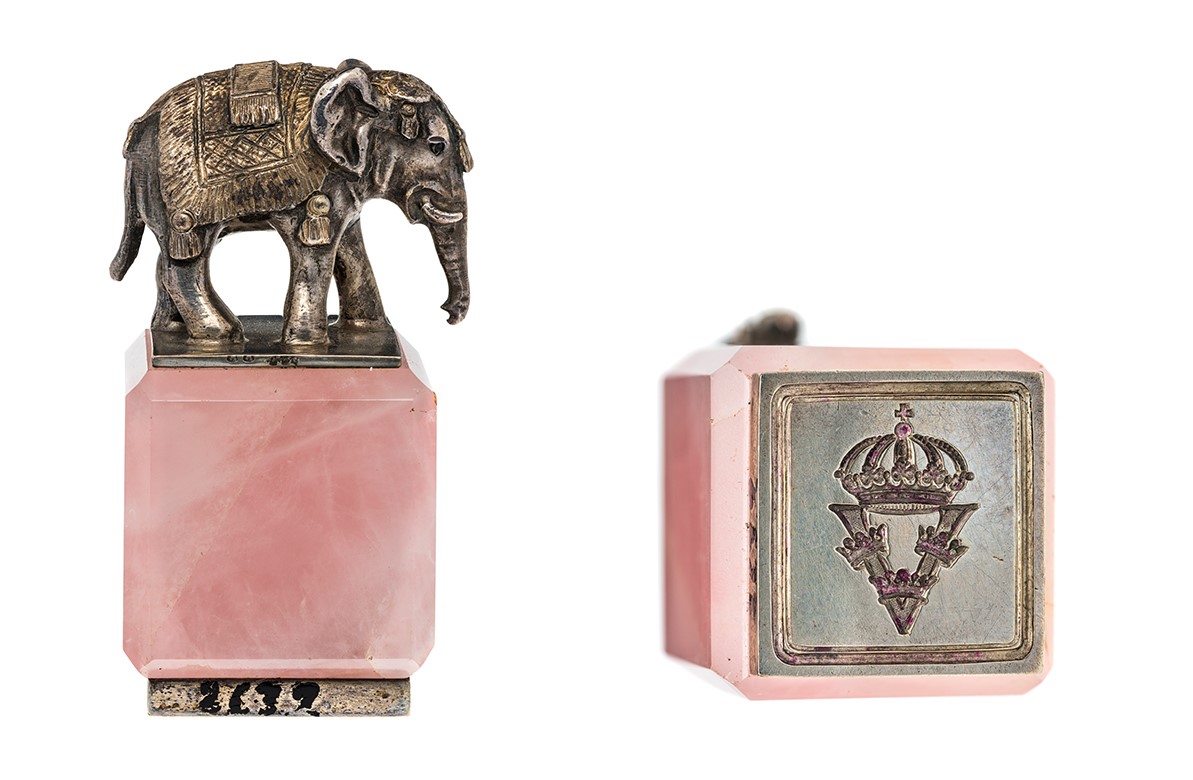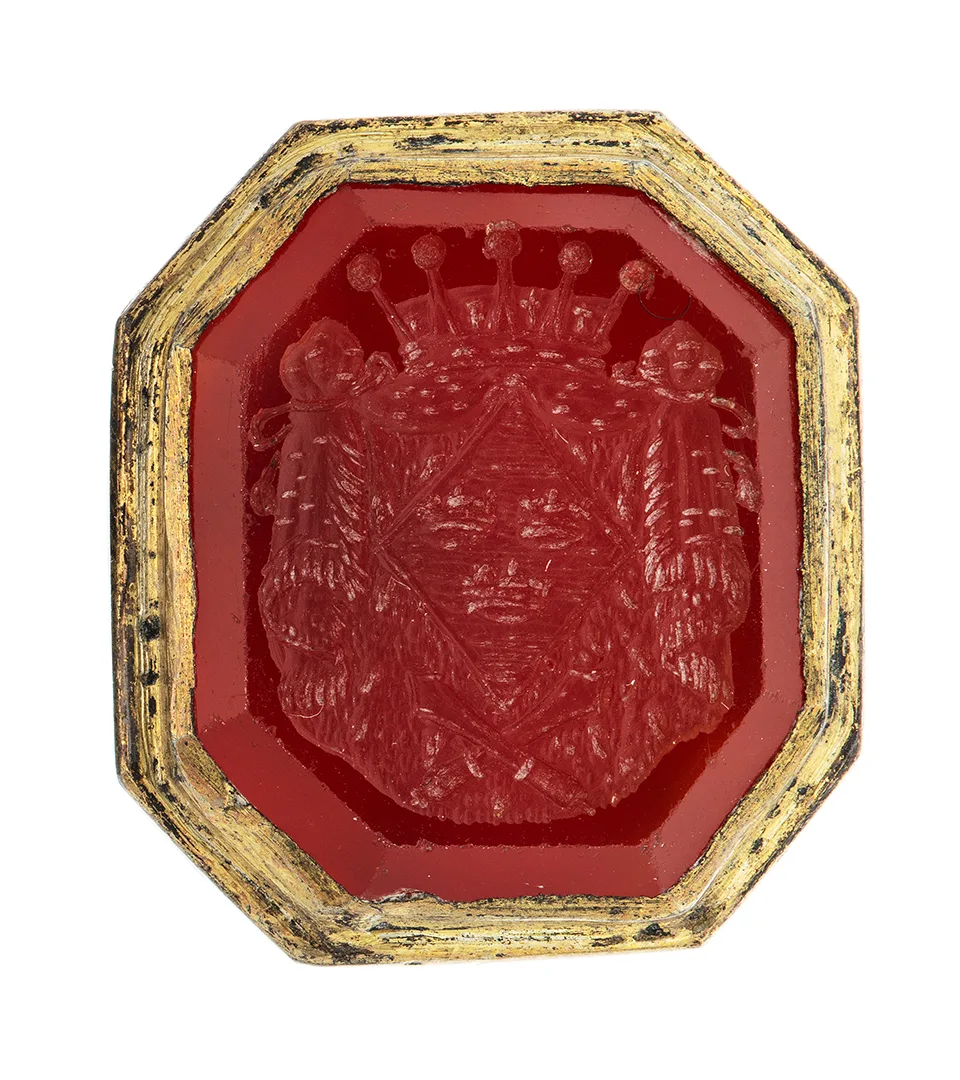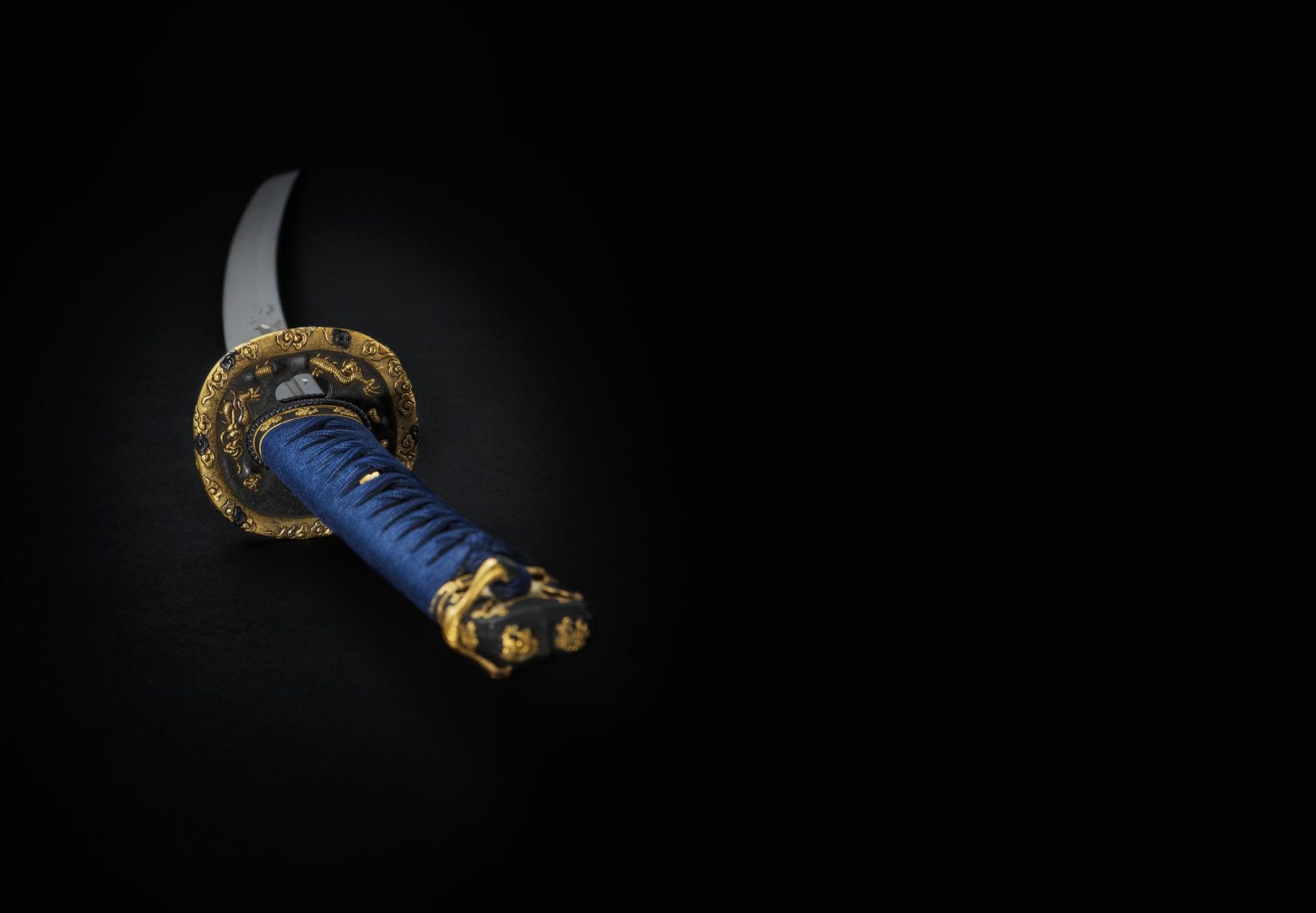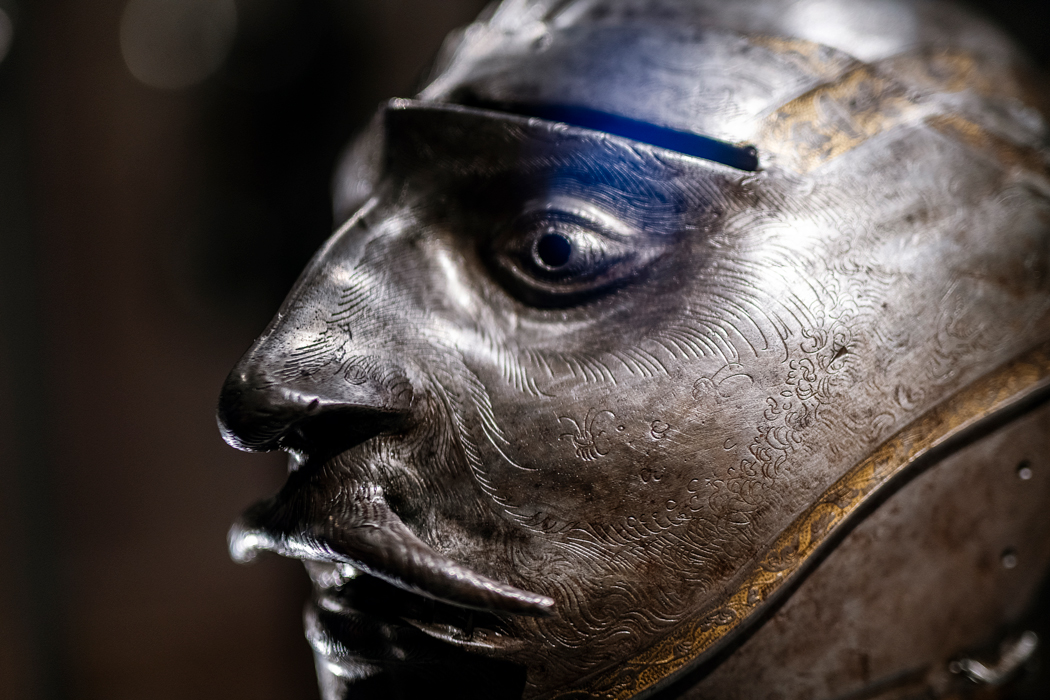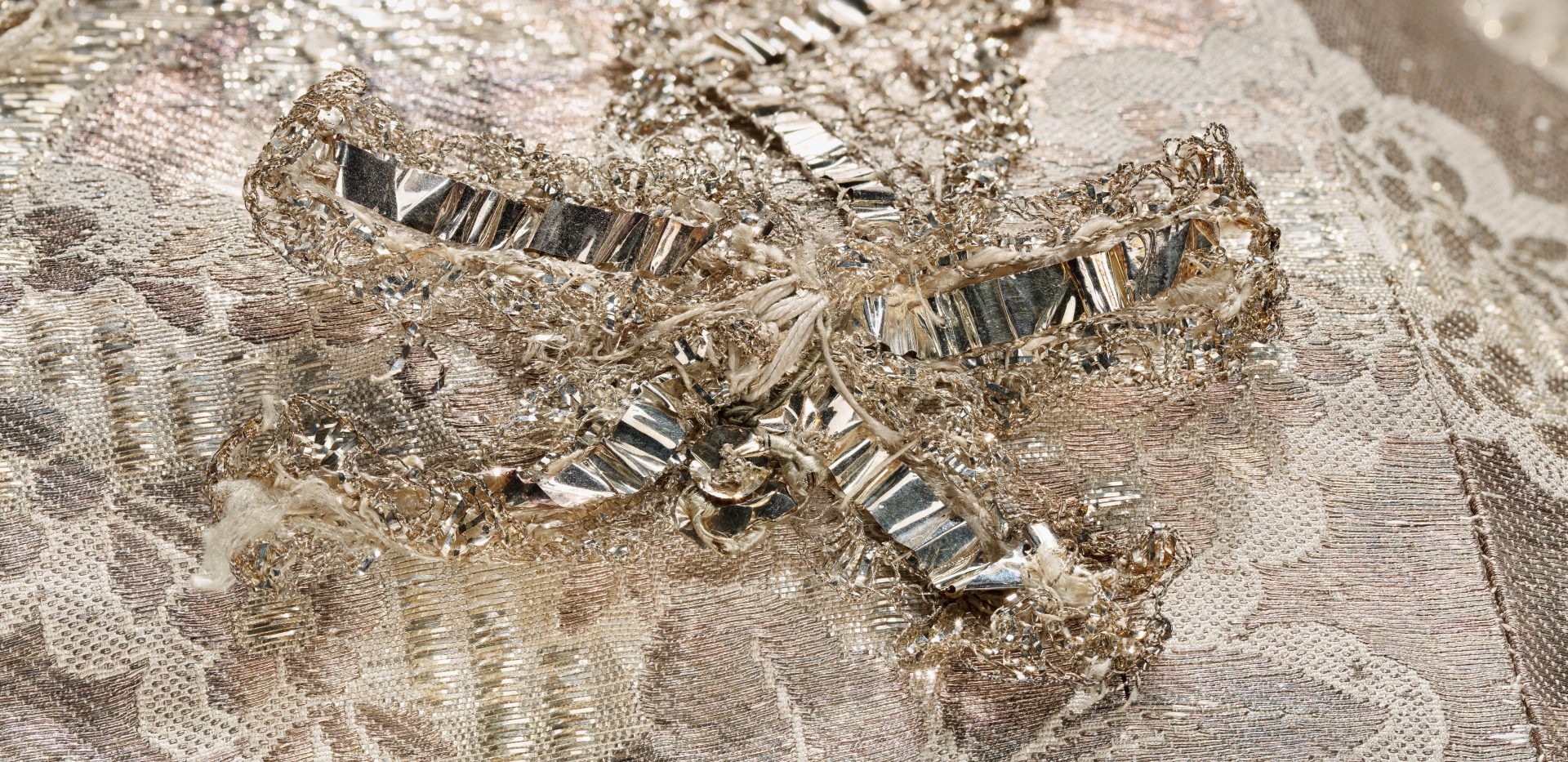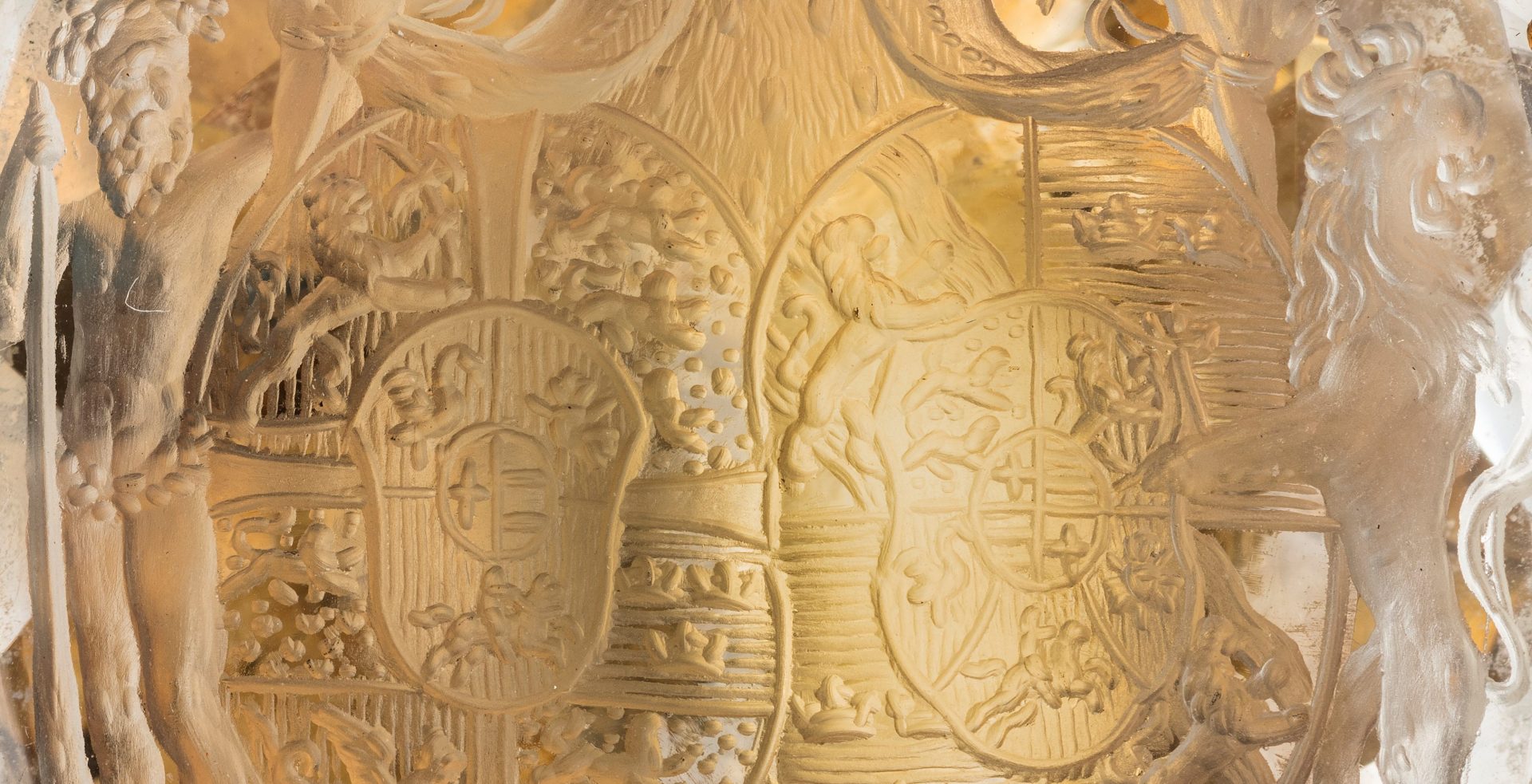
The Imprint of Monarchy
For royalty, the appearance of seals would change with important life events such as weddings and coronations. Seals could also be reused. The value of the seals is also reflected in the fact that they could be integrated into jewellery or be part of a stamp worn by the owner of the seal.
Many of the royal seals and cases were presented by descendants to the Royal Wardrobe (which became part of the Royal Armoury in 1858) after the owner’s death. Some of them were transferred to the Royal Antiquarian and Historical Museum, which later became National Historical Museums, after which they were deposited in the Royal Armoury.
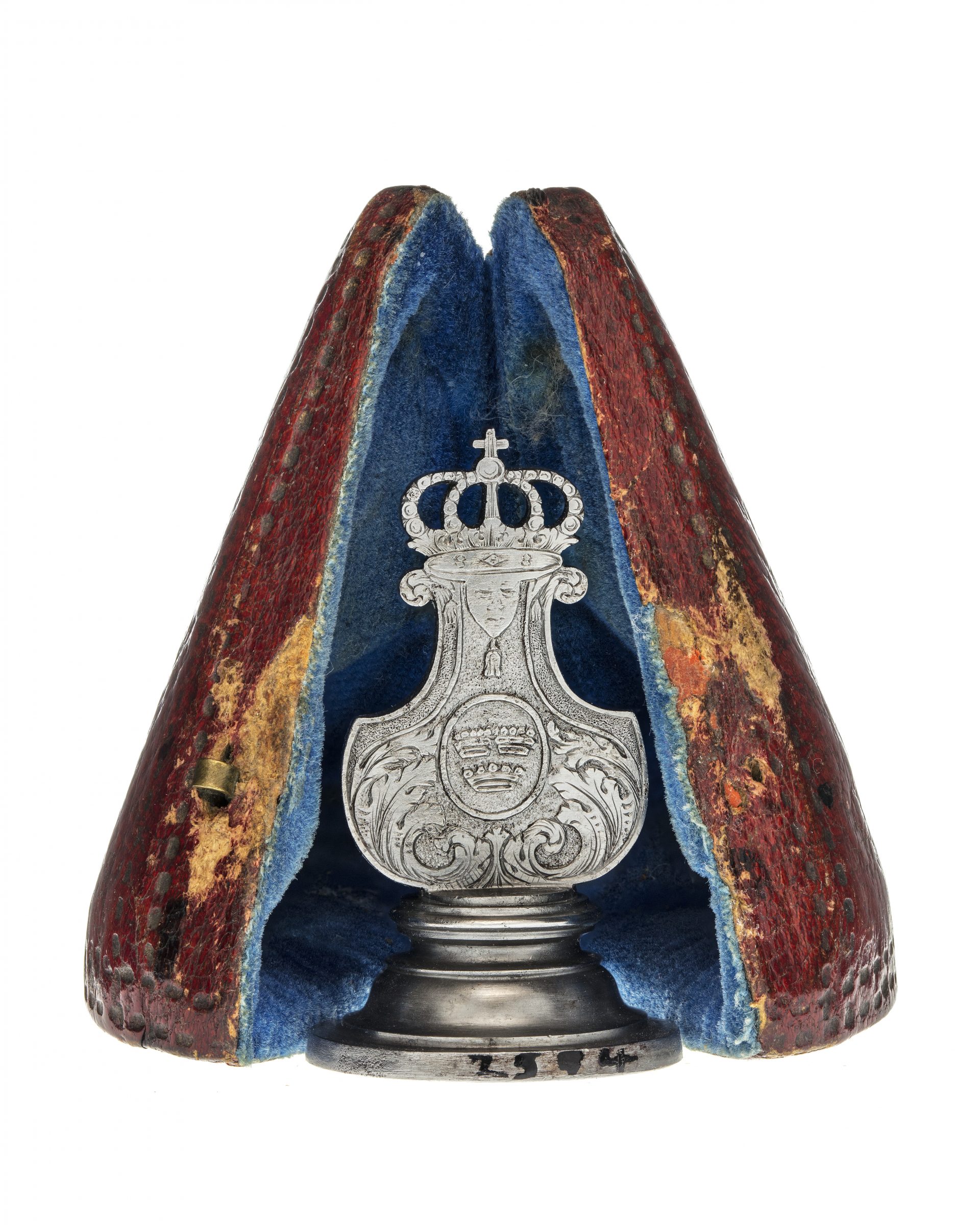
An insight
What do the collections contain? Quite a lot. Here is a brief presentation of some of the seals that have belonged to queens and princesses.
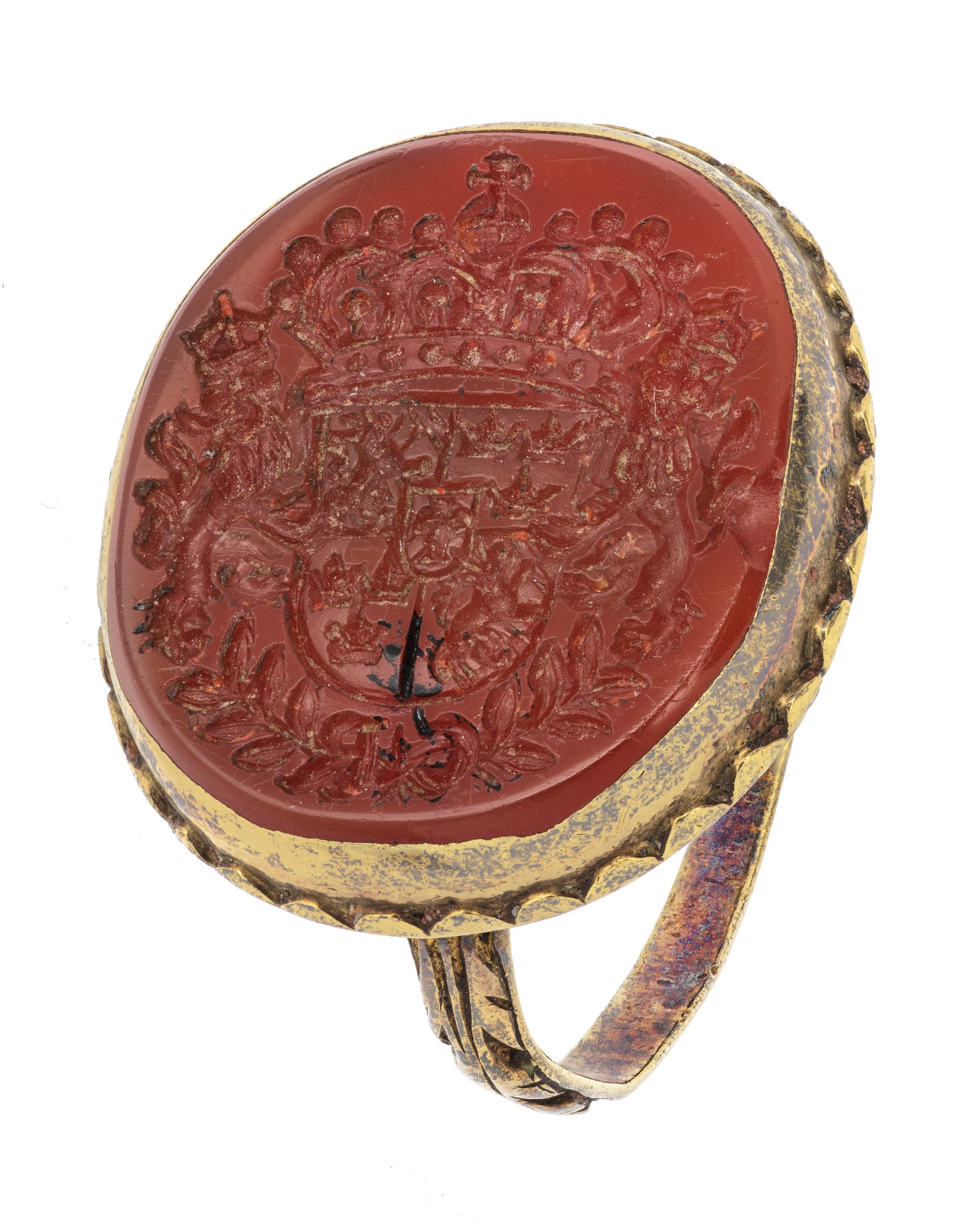
Although the Vasa dynasty included seven monarchs, there is only one seal preserved in the Royal Armoury’s collections: Queen Kristina’s seal ring. It is a gold ring made with an oval carneol with a bevelled edge, engraved with the Swedish national coat of arms and the initials C R (Christina Regina).
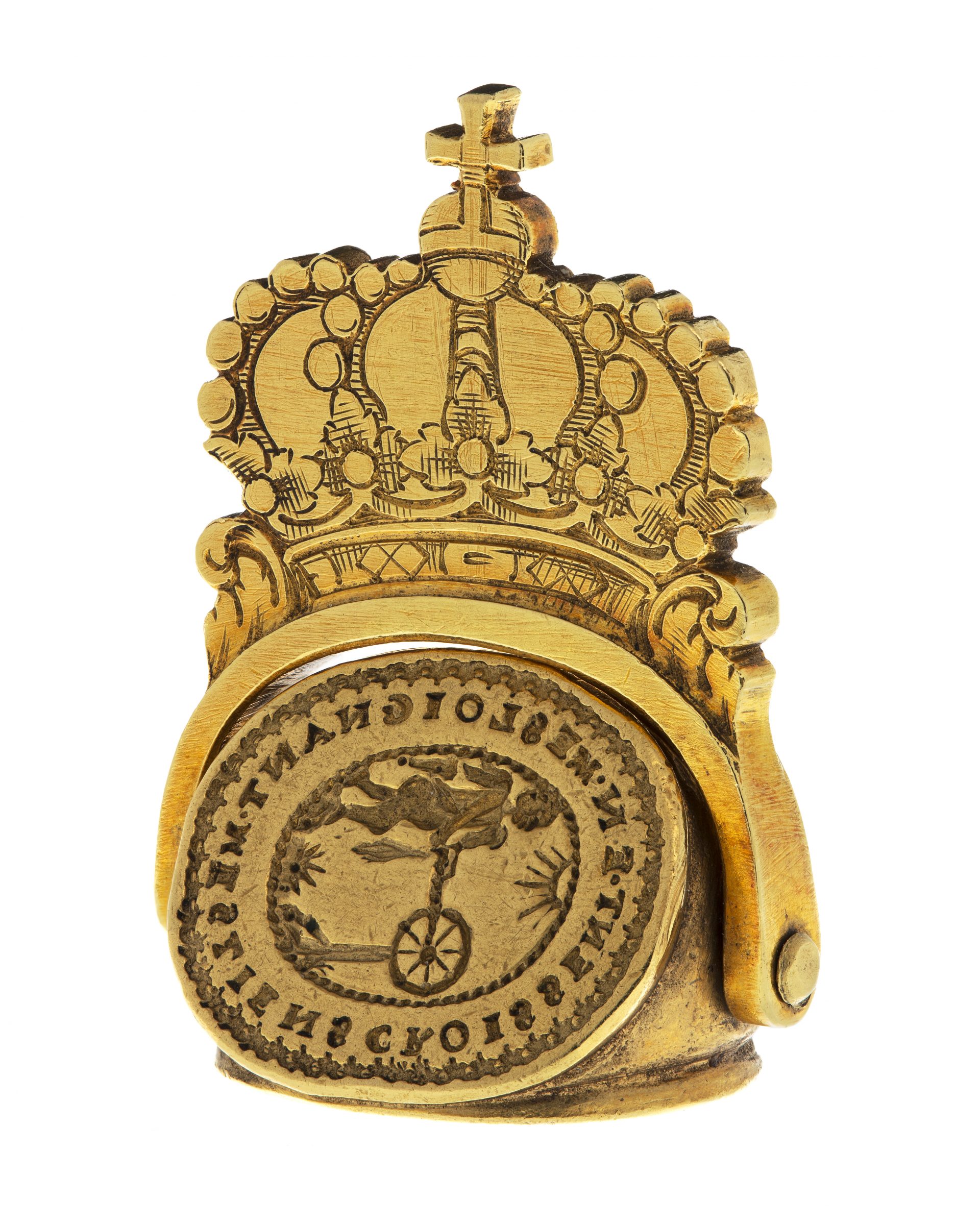
Queen Ulrika Eleonora’s motto on her seal, ME SOIGNANT MES LIENS CROISSENT (approx.: My ties become stronger when I nurture them), could refer to the Queen’s philanthropic activities, or to family ties. One side of the seal is not engraved, the other two bear her monogram and an image of a cherub twisting a rope.
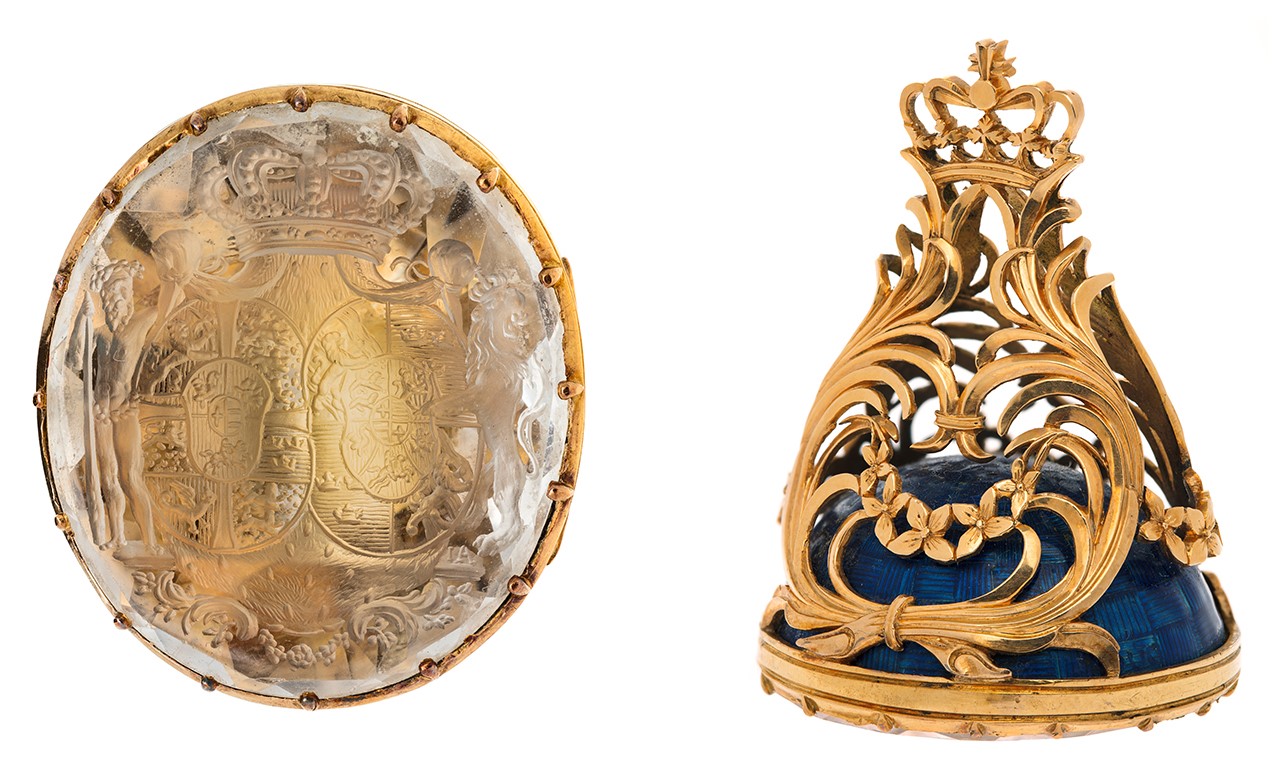
The marriage between Sofia Magdalena and Gustav III was arranged when they were still children as a means of securing the friendship between Denmark and Sweden. Her seal depicts, as it should, the coats of arms of both countries. The shield bearers are also taken from the two countries: the lion from the Swedish side and the wild man from the Danish one.

The seal that belonged to Queen Desideria was made during her years in France. She married Marshal Jean Baptiste Bernadotte in 1798, when he was still serving in France. The seal was probably made around 1806, when her husband was appointed Prince of Pontecorvo. The shield displays the principality’s coat of arms, a bridge and an eagle against a blue background.


Louisa’s seal as Queen is a good example of heraldic ranking. First of all, we have to remember that seals are carved or engraved in a reverse image. Otherwise they would be no use as a seal. In the final image, on the seal imprint, the right-hand side is called dexter and the left-hand side is called sinister. A position in sinister is considered to be lower in rank. Louisa's seal therefore shows her family coat of arms, Nassau, which subordinated the Swedish-Norwegian coat of arms, which also has two royal crowns to denote that it is a dual monarchy.
Queen Victoria’s two seals are examples of how a seal changed, depending on the owner’s status. As Crown Princess, she used a seal with the coat of arms of the House of Baden, a red crossbar on gold.
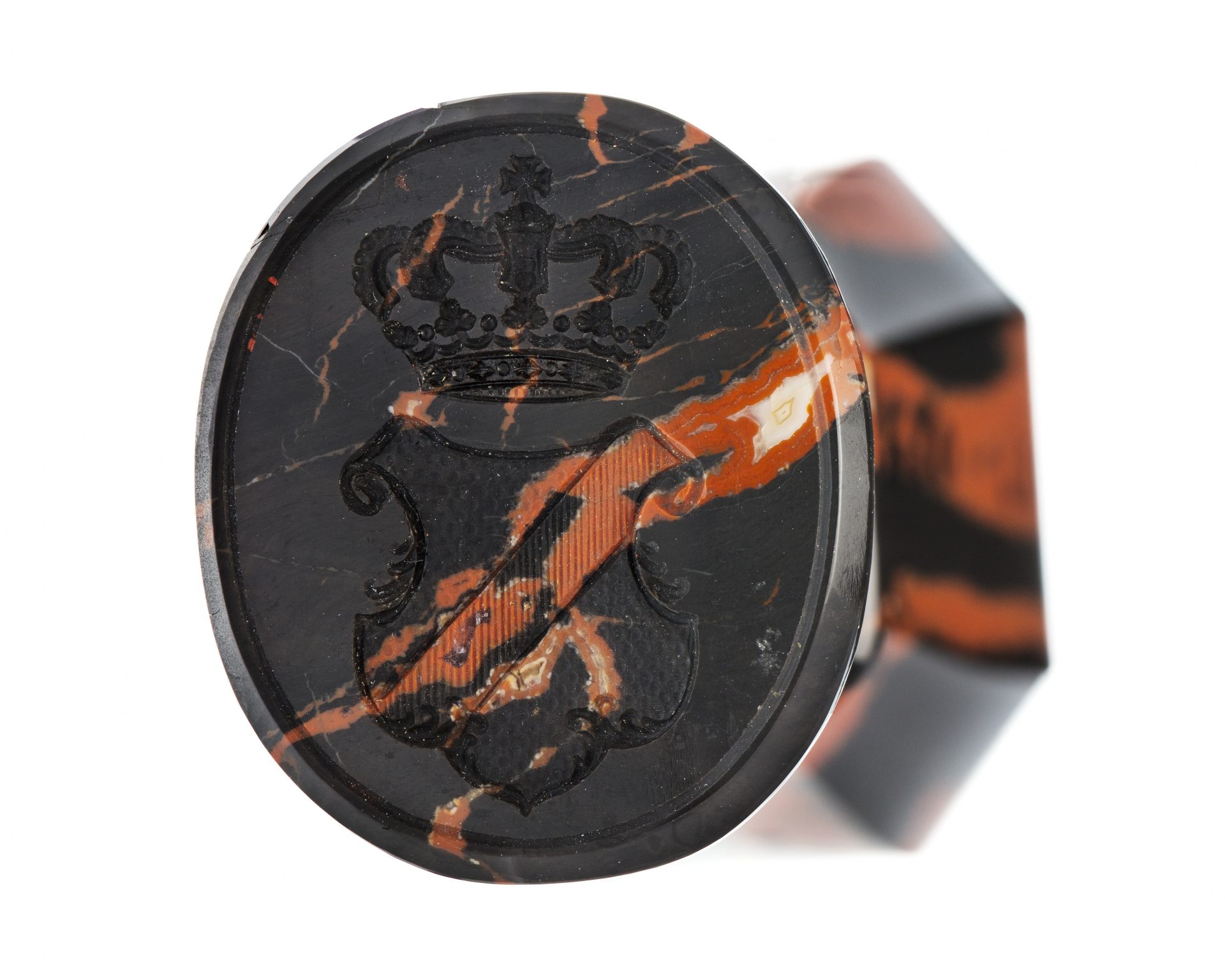
Her private seal as Queen has a simple V with a crown. The shaft is more elaborate, with rose quartz and a silver elephant. The seal was made around 1910 by G. Schmidt-Staub, a highly regarded watchmaker.
